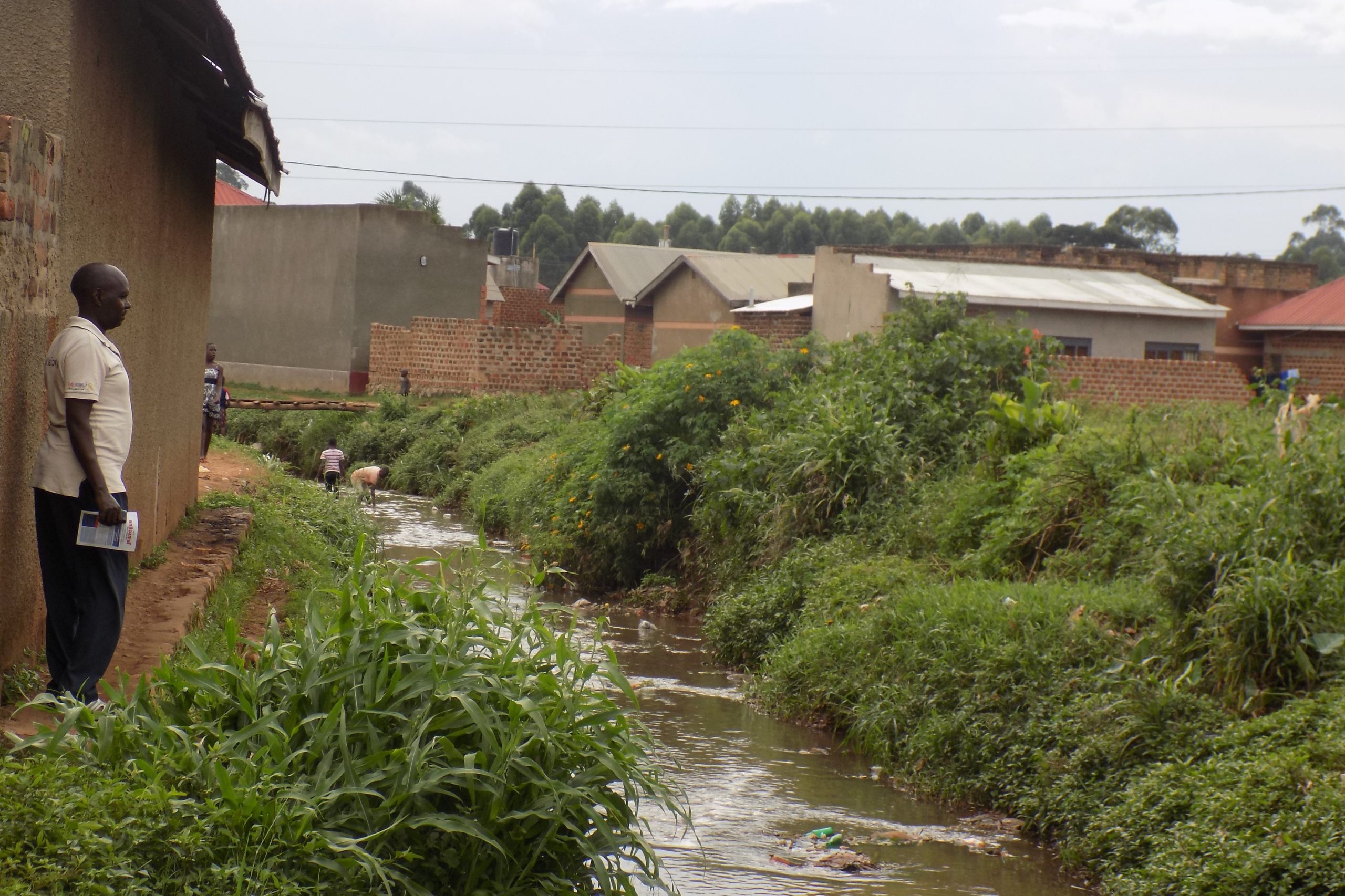Nabisasiro Drainage Channel money disappears
The current state of storm of water channels in Kampala Capital City especially in places known as Chechnya and Kosovo, is pathetic. When it rains, locals in the above mentioned villages, do not sleep due to floods.
It takes 2-3 hours for the burst up floods to settle so that traffic can resume. If it is at night, most families spend the nights on top of the ridges or any other raised grounds. Health and hygiene is always at stake because the burst up floods carry all the sewage from upper homes in Namirembe, Mengo and Rubaga to this area.
The problem is that the locals occupied a wetland and sometimes water try to return to their former habitat. Surprisingly, Kampala Capital City Authority (KCCA) and National Environmental Management Authority (NEMA) officials play part in giving them shares in the wetland.
The Drone Media asked some of the residents, Ismah Mugalu and Ibin Ssenfuma, who were constructing temporary structures along the Nabisasiro Drainage Channel. They claimed the marshy wetland had become a den of criminals. They said by occupying it they chased criminals.
Well, Chechnya is the nickname of the area starting from late Prof. Apollo Nsibambi along Nabisasiro Drainage Channel while Kosovo is the lower Lusaze.
Residents of these villages hoped for the best when SMEC Uganda moved around their area with swagger, claiming it was contracted by KCCA to work on the improvement of the drainage channel.
The Project was estimated to cost USD 93,014,897 for the entire Project Channel draining through Northern bypass culvert with high densely populated, for example secondary channels 3, 7, 8, and 9 (locally named Nabisasiro.
However, the project died a natural death. It is now four (4) years nothing is ever mentioned; floods continue to engulf homes; giving residents sleepless nights.
What is disturbing the residents is that they were stopped from building their houses along the drainage channel; SMEC Uganda officials promised compensation because they moved with a private valuer, which successfully valued all the properties along the drainage channel.
Now, according to the KCCA fact sheet of 2018 the channels being considered for improvement in the proposed project in their current state were selected
because of the flooding occurrences within the catchments of Lubigi, Kansanga-Gaba and Kinawataka.
The major problems plaguing the three selected catchments can be summarized as: Flooding-There are very many signs of flooding within the drainage channel area as evidenced by flood marks on structures, flood prevention barriers constructed at the entrances of houses, deserted houses, and based on information obtained from community members and local leaders during stakeholder consultations.
Secondly, there are failed culverts- culvert structures along the length of the drainage channel vary significantly in both structural and hydraulic condition and can be classified as ranging from:
• Type A: culverts which have failed both hydraulically and structurally and should either be physically removed from the channel or totally replaced but are held in place due to the amount of vehicular traffic in place;
• Type B: culverts which have failed structurally and should either be physically removed from the channel or totally replaced; and
• Type C: culverts which have been a major source of flooding and have been
physically removed from the channel.
Thirdly, there is Siltation-the siltation problem within the drainage channels is rampant.
It is evident that low-lying areas are regularly overtopped by floodwaters, causing damage to people’s homes and industrial properties, seriously disrupting traffic flow and economic activity in the City and increasing
water pollution.
The frequency of flooding has increased due to increased runoff caused by land-use changes in the catchments and reduction of the buffer capacity of wetlands due to encroachment. This results in loss of lives, destruction of livelihoods, and recurring costs to Kampala’s socio-economy. Investment
in upgrading drainage infrastructure is required to protect people and their property and also spur economic development.
According to a study carried out by SMEC Uganda, the Improvement of Drainage Systems project aimed at improving three (03) of the eight (08) drainage systems in the city i.e. Lubigi (System 2), Kansanga and Gaba (System 4 and 4A), and Kinawataka (System 6) in order to resolve the
problem areas along these systems such as risk of flooding, and lack of accessibility for channel maintenance.
The project ran until December 2019. The entire project cost for studies, engineering and construction of drainage, roads, and capacity building is USD 183.7 Million.
According to Patrick Nkoba, a resident of Kosovo, the affected houses or properties along Nabisasiro Drainage Channel were registered years back. They were told that no new developments would be valued or
compensated.
There will be need for an update of the registry for new changes e.g. if land is sold or if the owner passed away, etc. All registered properties were to be surveyed and valued.
SMEC has operated in Uganda since 2002, and established a permanent office in Entebbe in 2003. SMEC’s first project in Uganda was the provision of technical assistance for a road sector project which included maintenance, rehabilitation and upgrade of Uganda’s national road network.
Since then, SMEC has worked on a number of projects including: feasibility studies for the planned construction of a 220 kV transmission line from Hoima Substation to Kafu Substation; consultancy services for feasibility studies and detailed engineering designs to Kampala Capital City Authority; and detailed engineering design and project management for the upgrade of five roads in eastern Uganda on behalf of the Uganda National Roads Authority.

